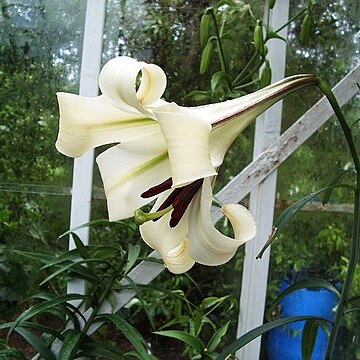A bulb plant. The bulb is round and 2-4.5 cm across. The scales are white. The stem is 0.7-2 m high. The leaves are scattered and often become smaller up the stalk. They are narrow and sword shaped. The leaf blade is 1.8-4 cm long by 7-15 cm long by 1-2 cm wide. There are 5-7 veins. The flowers can occur singly or as several in a group. They have a scent. The flowers are trumpet shaped. The flowers are pink and unspotted. The fruit is a capsule which is 4.5-6 cm long by 3.5 cm wide.

